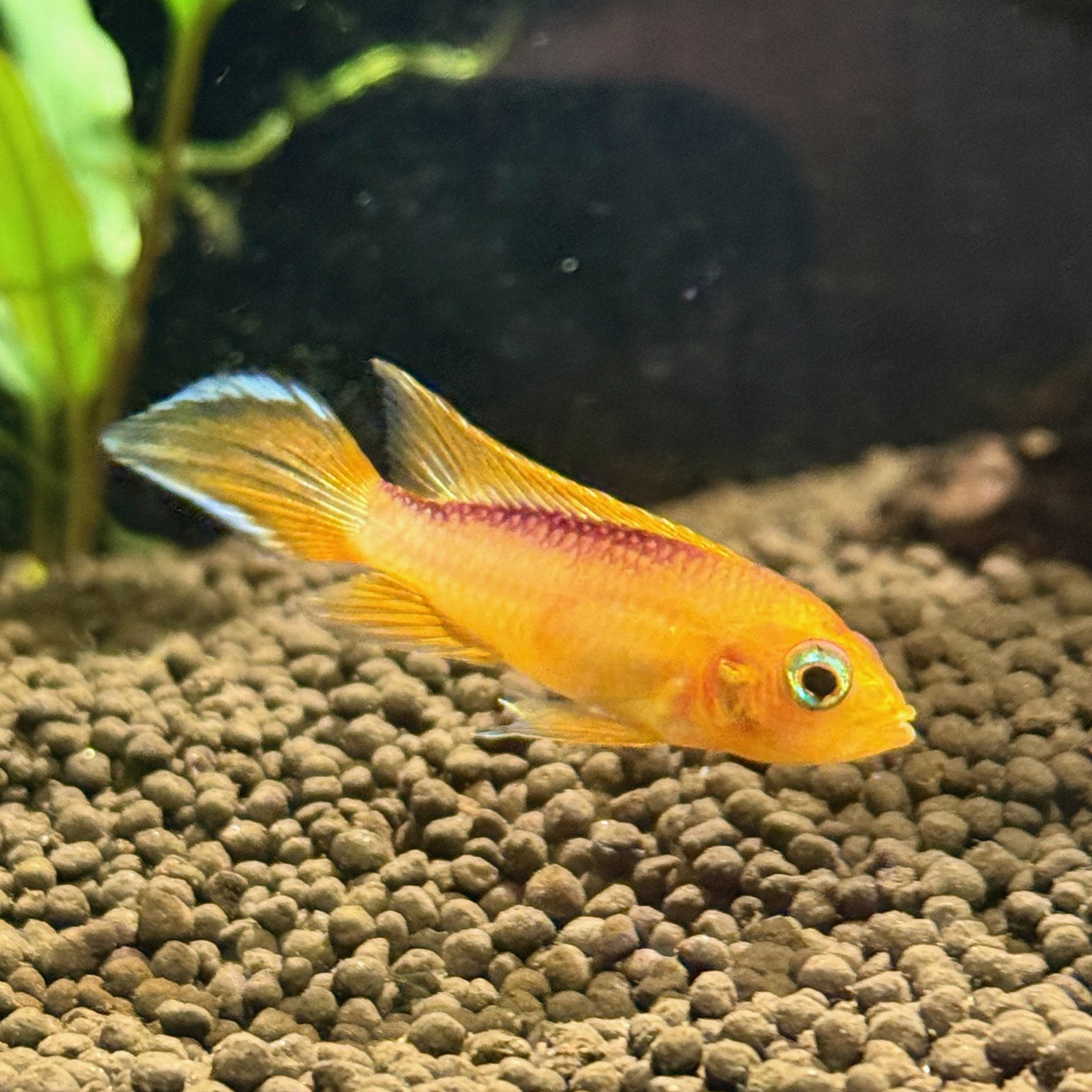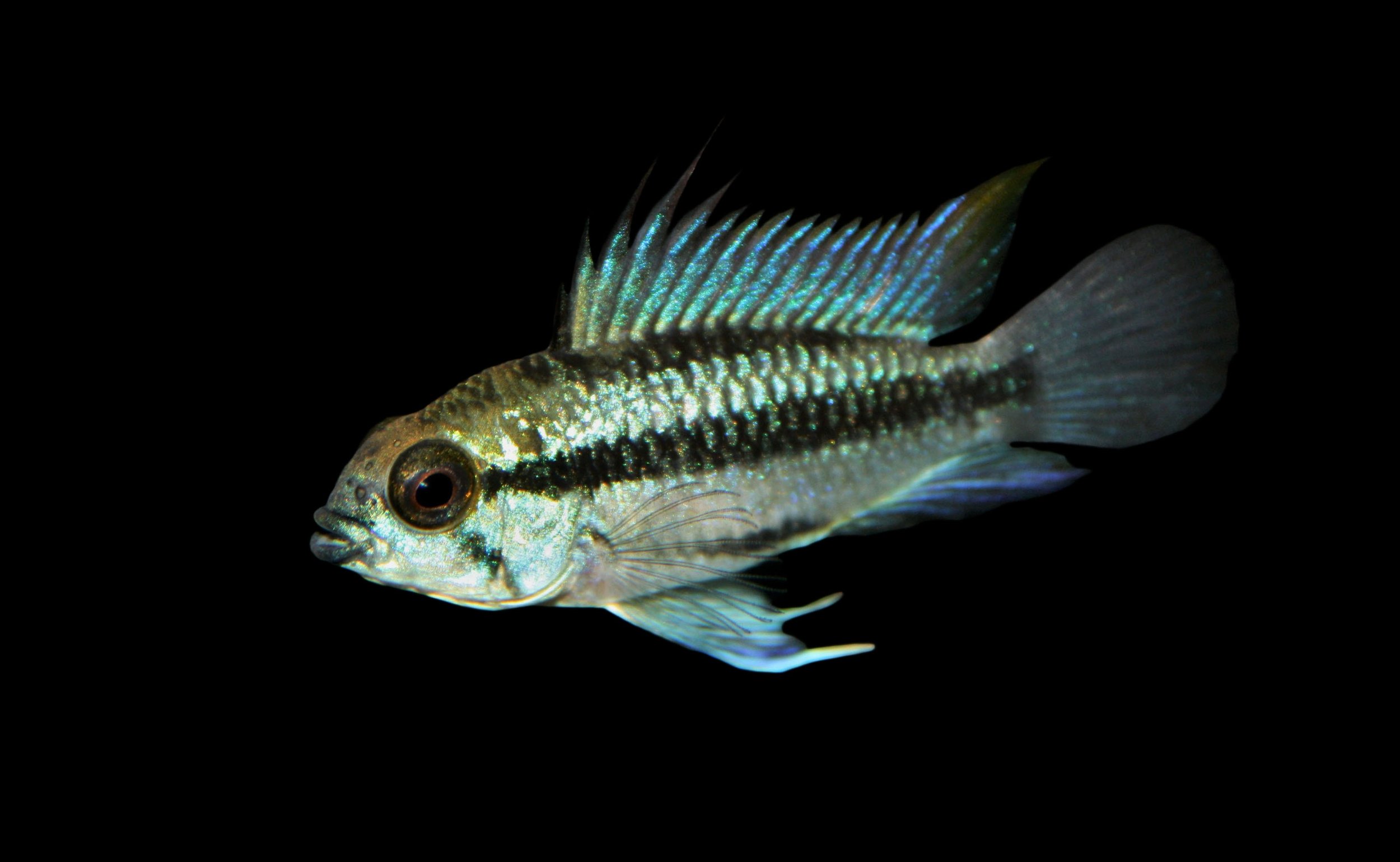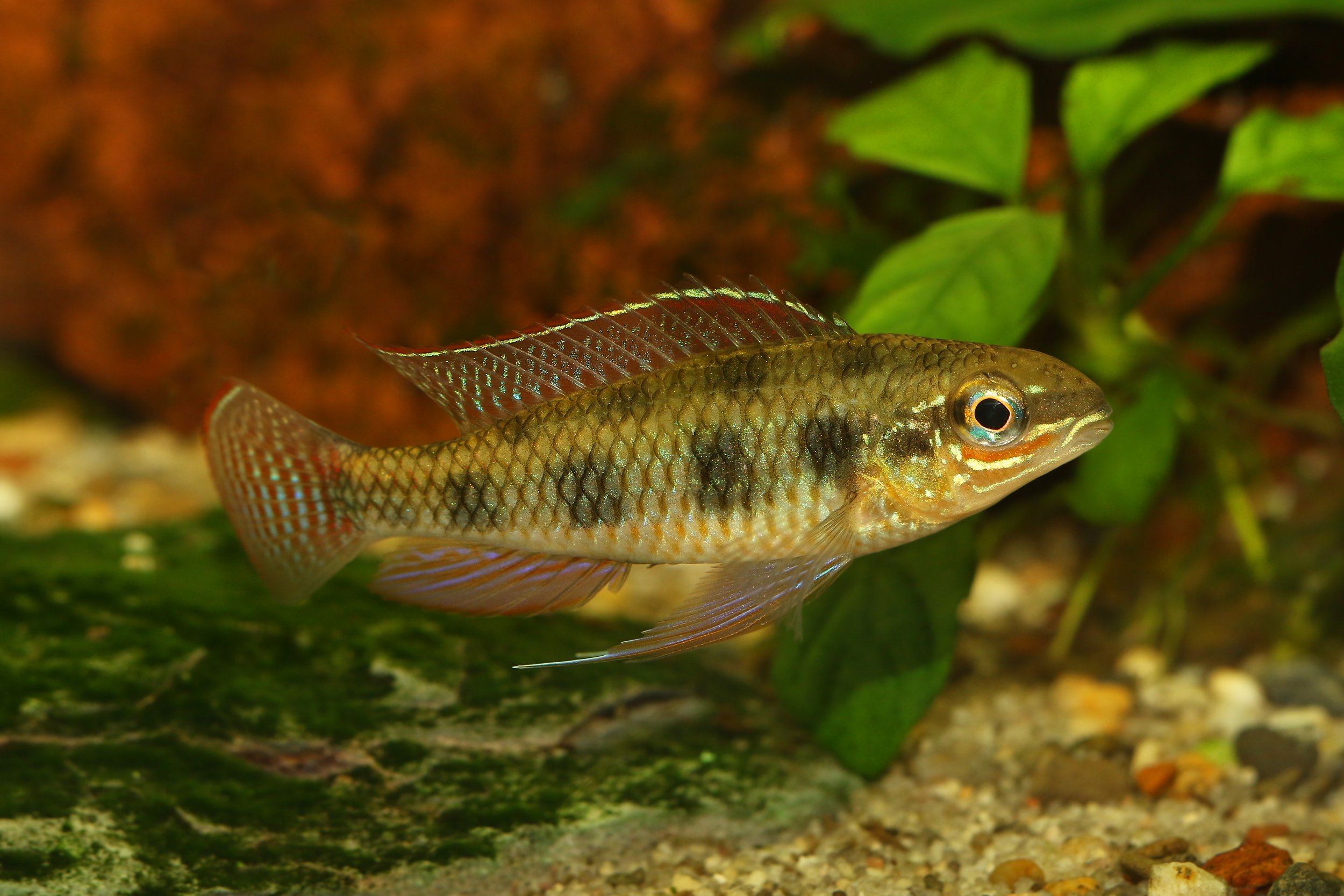 Image 1 of 2
Image 1 of 2

 Image 2 of 2
Image 2 of 2



Apistogramma Panduro-PAIR
Apistogramma panduro, commonly known as the Panduro Apistogramma, is a captivating freshwater fish species native to South America. Specifically found in the upper reaches of the Rio Nanay basin in Peru, these apistogrammas inhabit slow-moving waters, often in densely vegetated areas.
Physically, Apistogramma panduro is characterized by its vibrant coloration and distinctive markings. Males typically display more intense and varied colors, including shades of blue, red, and yellow, especially during the breeding season. They have a relatively small size, typically reaching around 2 to 3 inches (5-7.5 cm).
In their natural habitat, Panduro Apistogrammas thrive in well-planted aquariums with areas for swimming and hiding spots provided by plants, driftwood, and rocks. They prefer soft to slightly hard water conditions, and maintaining a stable and clean environment with proper filtration contributes to their overall well-being.
Known for their territorial behavior, Panduro Apistogrammas are best kept in pairs or small groups in a species-specific tank. They can be somewhat shy, so providing adequate hiding places is essential. A well-balanced diet, including high-quality flakes, pellets, and small live or frozen foods, meets their nutritional needs.
Maintaining water conditions within the range of 75-82°F (24-28°C) and a pH level between 6.0 to 7.5 is advisable. Regular water changes and proper filtration contribute to their health and vitality.
Breeding Apistogramma panduro in captivity is achievable. Creating a separate breeding tank with soft, slightly acidic water and providing caves or flat surfaces for spawning encourage successful reproduction. Males intensify their colors during courtship, and careful attention to water parameters is essential for breeding success.
In summary, the Panduro Apistogramma is a visually stunning and intriguing addition to freshwater aquariums, appreciated for its vibrant colors and unique behaviors. Recreating their natural habitat from the Rio Nanay basin in Peru and adhering to proper care conditions contribute to their well-being in captivity.
Apistogramma panduro, commonly known as the Panduro Apistogramma, is a captivating freshwater fish species native to South America. Specifically found in the upper reaches of the Rio Nanay basin in Peru, these apistogrammas inhabit slow-moving waters, often in densely vegetated areas.
Physically, Apistogramma panduro is characterized by its vibrant coloration and distinctive markings. Males typically display more intense and varied colors, including shades of blue, red, and yellow, especially during the breeding season. They have a relatively small size, typically reaching around 2 to 3 inches (5-7.5 cm).
In their natural habitat, Panduro Apistogrammas thrive in well-planted aquariums with areas for swimming and hiding spots provided by plants, driftwood, and rocks. They prefer soft to slightly hard water conditions, and maintaining a stable and clean environment with proper filtration contributes to their overall well-being.
Known for their territorial behavior, Panduro Apistogrammas are best kept in pairs or small groups in a species-specific tank. They can be somewhat shy, so providing adequate hiding places is essential. A well-balanced diet, including high-quality flakes, pellets, and small live or frozen foods, meets their nutritional needs.
Maintaining water conditions within the range of 75-82°F (24-28°C) and a pH level between 6.0 to 7.5 is advisable. Regular water changes and proper filtration contribute to their health and vitality.
Breeding Apistogramma panduro in captivity is achievable. Creating a separate breeding tank with soft, slightly acidic water and providing caves or flat surfaces for spawning encourage successful reproduction. Males intensify their colors during courtship, and careful attention to water parameters is essential for breeding success.
In summary, the Panduro Apistogramma is a visually stunning and intriguing addition to freshwater aquariums, appreciated for its vibrant colors and unique behaviors. Recreating their natural habitat from the Rio Nanay basin in Peru and adhering to proper care conditions contribute to their well-being in captivity.
Apistogramma panduro, commonly known as the Panduro Apistogramma, is a captivating freshwater fish species native to South America. Specifically found in the upper reaches of the Rio Nanay basin in Peru, these apistogrammas inhabit slow-moving waters, often in densely vegetated areas.
Physically, Apistogramma panduro is characterized by its vibrant coloration and distinctive markings. Males typically display more intense and varied colors, including shades of blue, red, and yellow, especially during the breeding season. They have a relatively small size, typically reaching around 2 to 3 inches (5-7.5 cm).
In their natural habitat, Panduro Apistogrammas thrive in well-planted aquariums with areas for swimming and hiding spots provided by plants, driftwood, and rocks. They prefer soft to slightly hard water conditions, and maintaining a stable and clean environment with proper filtration contributes to their overall well-being.
Known for their territorial behavior, Panduro Apistogrammas are best kept in pairs or small groups in a species-specific tank. They can be somewhat shy, so providing adequate hiding places is essential. A well-balanced diet, including high-quality flakes, pellets, and small live or frozen foods, meets their nutritional needs.
Maintaining water conditions within the range of 75-82°F (24-28°C) and a pH level between 6.0 to 7.5 is advisable. Regular water changes and proper filtration contribute to their health and vitality.
Breeding Apistogramma panduro in captivity is achievable. Creating a separate breeding tank with soft, slightly acidic water and providing caves or flat surfaces for spawning encourage successful reproduction. Males intensify their colors during courtship, and careful attention to water parameters is essential for breeding success.
In summary, the Panduro Apistogramma is a visually stunning and intriguing addition to freshwater aquariums, appreciated for its vibrant colors and unique behaviors. Recreating their natural habitat from the Rio Nanay basin in Peru and adhering to proper care conditions contribute to their well-being in captivity.







